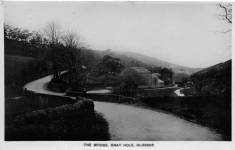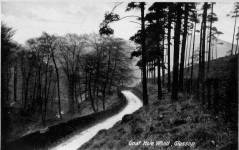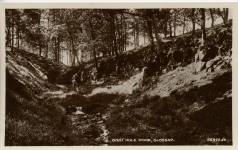The enterprise must have been successful because John Robinson retained Jumble even after he bought Gnat Hole Farm and built Gnat Hole Mill. Following his death, in 1800, the ownership of the two farms was split between his sons, Gnat Hole eventually becoming the property of Joseph Robinson who had been born about 1769. The main "product" of Gnat Hole Farm appears to have been sheep, reared to provide some of the wool needed by the mill. Cattle were also kept though as Joseph's will, dated 30th May 1835 includes the provision "I give and bequeath unto my said wife Mally such one of my Cows as she shall within one calendar month next after my decease select or make choice of."
Joseph's estate (apart from a provision for his widow) was split between the two children of his eldest daughter Zipporah (who had died in 1826 after marrying Joseph Ridgway of Swallow Houses Mill, Hayfield) and his surviving four sons and two daughters. The two elder sons, George and Joseph, had already made their way in the world, at one time being in partnership at Primrose Mill, using it as a woollen mill. By the time of the 1841 census George had moved to Manchester and opened a business as a Glass Paper Manufacturer and Joseph junior had become a linnen draper at Bridge End. He later built the shops at numbers 12 to 16 Norfolk Street, Glossop, where he carried on his business as a Woollen Draper (succeeded, after his death in 1873, by his son Walter). He also built houses at Robinson's Court, between Norfolk Street and Ellison Street.
|
 |



